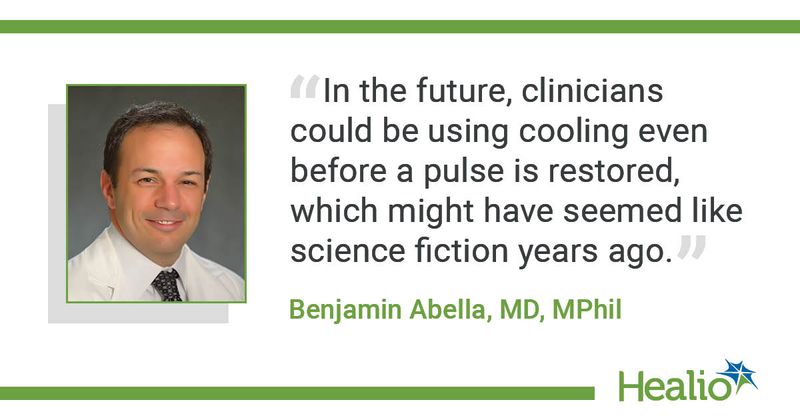Q&A: The importance of ‘high-quality targeted temperature management’ in post-arrest care
A new algorithm that includes targeted temperature management in post-cardiac arrest care was included in the 2020 American Heart Association Guidelines for Cardiopulmonary Resuscitation and Emergency Cardiovascular Care.
As Healio previously reported, the AHA released its 2020 guideline with new, updated and reaffirmed recommendation for CPR and emergency CV care.

The current guideline, published in Circulation, recommends targeted temperature management for adults who do not follow commands after return of spontaneous circulation:
- in out-of-hospital cardiac arrest with any initial rhythm;
- in in-hospital cardiac arrest with initial nonshockable rhythm; and
- in in-hospital cardiac arrest with initial shockable rhythm.
However, many questions remain regarding whether targeted temperature management, compared with strict normothermia, improves outcomes. Also unclear are optimal temperature goals, optimal duration before rewarming and the best approach to rewarming after cardiac arrest.
Healio discussed the updated recommendations on targeted temperature management and goals for future research with Benjamin Abella, MD, MPhil, professor of emergency medicine and director of the center for resuscitation science at the University of Pennsylvania.
Question: What are the main takeaways from the guideline update?
Abella: The 2020 AHA guidelines for CPR and emergency CV care reflect new global resuscitation treatment recommendations that emphasize high-quality post-arrest care for the brain.
These guidelines support the use of targeted temperature management, a technique to lower core body temperature that has been shown in numerous clinical trials to improve survival in concert with other therapeutic approaches, including careful management of oxygenation and hemodynamic status during post-arrest care. The new AHA guidelines highlight targeted temperature management as an integral part of the chain of survival during emergency cardiac care, with the goal of reducing the significant brain injury after resuscitation from cardiac arrest.
Q: How might this influence clinical practice?
Abella: Prehospital providers, hospital-based resuscitation providers and critical care experts need to recognize that all care protocols for cardiac arrest are built upon the cornerstone of excellent high-quality CPR and post-arrest targeted temperature management, and the evidence has continued to grow on these topics. They need to be mindful that quality assurance and implementation are now crucial elements to the formula for survival. More and more people are surviving cardiac arrest, which makes it increasingly important that we institute state-of-the-art post-arrest care, which includes interventions like targeted temperature management.
Q: What areas will require further research?
Abella: A recent study published in Critical Care (Taccone FS, et al. Crit Care. 2020;doi:10.1186/s13054-019-2721-1) proposes the novel concept of “high-quality targeted temperature management” and advocates for the therapeutic intervention with devices using temperature feedback systems that provide more rapid time-to-target temperature, less temperature variability and accurate slow rewarming compared with external methods such as ice packs, ice pads or cold fluids.
There are a number of medical devices on the market that are established for post-arrest care and these devices are certainly paving the way for targeted temperature management technology. Automatic feedback loops are present in several devices (Arctic Sun, Becton Dickinson; Thermogard, Zoll; IQool System, BrainCool) and allows clinicians to carefully monitor and control patient temperature.
Of course, it is important for us to push for additional research in the coming years to implement better and better clinical practice, but these are certainly very promising innovations and the AHA guidelines do support them.
Q: Is there anything else you would like to add?
Abella: In terms of CPR and emergency CV care, the new guidelines are upping the ante and putting an increased focus on quality of care.
In the realm of post-arrest care, one of the exciting concepts on the horizon is these new approaches to rapid cooling. There have been several important studies that were not central in the guidelines but noted in the text that suggested intra-arrest cooling might be an important direction for future research.
In the future, clinicians could be using cooling even before a pulse is restored, which might have seemed like science fiction years ago, but newer technologies are now allowing this to become clinically feasible. Innovative medical transnasal evaporative cooling devices being developed and used in Europe now, for example, are providing unique ways to implement targeted temperature management for cardiac arrest at the site of the arrest, or in the ambulance.
